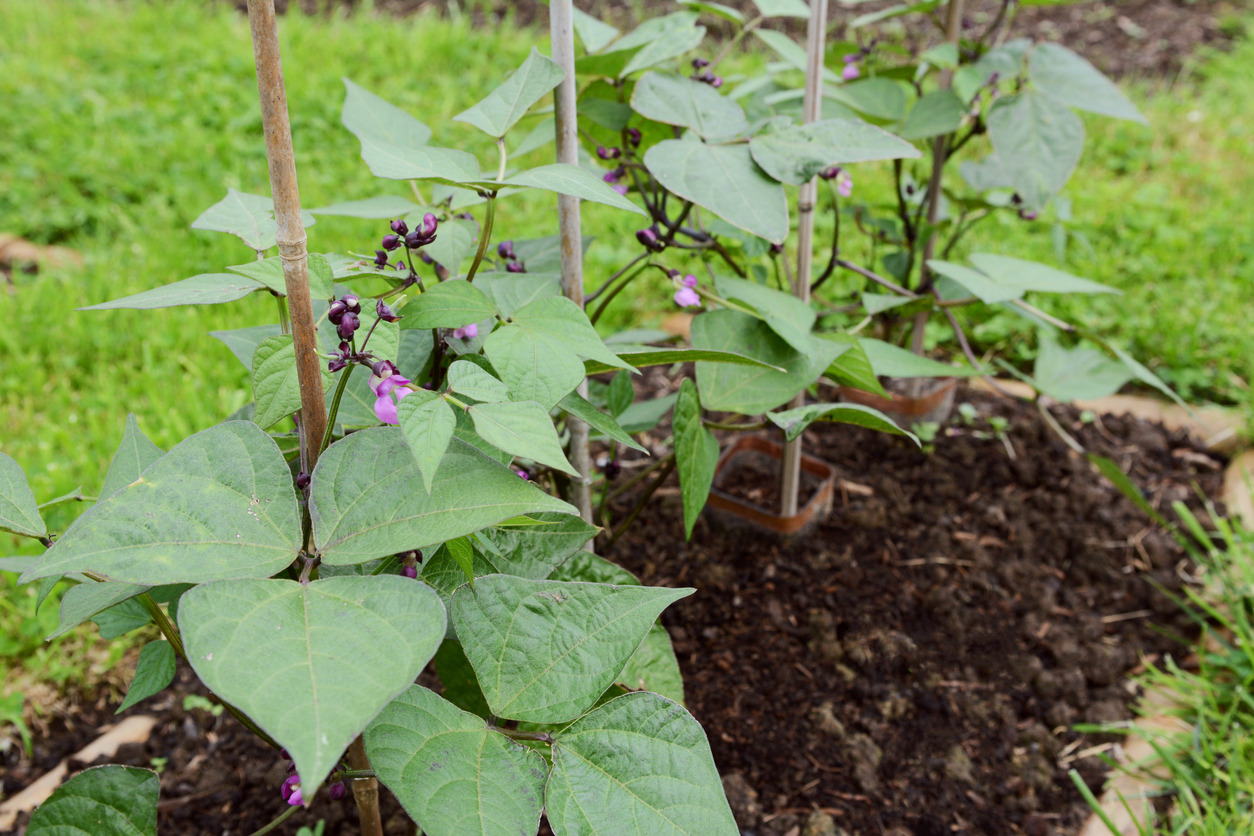
Green beans in open soil
Beans, beans, they’re good for your heart! But what if those beans don’t want to put in much effort? A pod here, a pod there, and a wimpy-looking Pole Bean Teepee? No thanks! One of my favorite plants to grow has always been climbing beans. There’s something magical about watching them wind their way up a trellis or pole, with their fluffy green leaves and colorful pods (I love Scarlet Runner Beans!) However, my journey with climbing beans hasn’t always been smooth sailing.
In my early days of gardening, I eagerly planted my beans and constructed sturdy teepees for them to climb. I waited with anticipation, expecting to see my teepees covered in a lush canopy of beans, just like the images I saw in social media. But sadly, my beans would often stop growing halfway up, leaving the upper portions of the teepees bare and exposed. Those cute photos of kids making forts out of their bean palaces? Not happening! I wondered if I needed to plant more beans or if there was something else I was missing.
After years of trial and error, I’ve learned that successfully growing climbing beans involves more than just planting them and hoping for the best. It requires a combination of proper planting techniques, support structures, and ongoing care. Here are some tips to help you achieve a bountiful harvest of climbing beans that will cover your trellis, pole, or corn stalk from top to bottom.
- Choose the right support structure
When it comes to climbing beans, the support structure plays a crucial role in their growth and development. Opt for sturdy materials such as bamboo poles, wooden stakes, or metal trellises. Ensure that the support is tall enough to accommodate the mature height of your bean variety, which can range from 6 to 12 feet or more. - Plant at the right time and depth
Timing is key when planting climbing beans. Wait until the soil has warmed up to at least 60°F (15°C) and all danger of frost has passed. Plant the beans about 1 inch deep and 2-3 inches apart, directly next to the support structure. This close proximity encourages the beans to start climbing from the very beginning. - Provide adequate spacing
While it may be tempting to plant more beans to achieve a fuller look, overcrowding can actually hinder their growth. Leave enough space between each plant to allow for proper air circulation and to reduce competition for nutrients. A spacing of 4-6 inches between plants is usually sufficient. - Train the beans to climb
Once your bean seedlings have emerged and developed their first set of true leaves, it’s time to guide them towards their support. Gently wrap the delicate tendrils around the pole or trellis, ensuring that they have a firm grip. Continue this process as the plants grow, encouraging them to climb higher and higher. - Ensure proper nutrition and watering
Climbing beans require consistent moisture and nutrients to thrive. Water your beans deeply and regularly, especially during dry spells. Apply a layer of organic mulch around the base of the plants to retain moisture and suppress weeds. Feed your beans with a balanced, slow-release fertilizer every 3-4 weeks to promote healthy growth. - Monitor for pests and diseases
Keep a watchful eye on your climbing beans for any signs of pests or diseases. Common issues include aphids, bean beetles, and powdery mildew. Regularly inspect the leaves and stems, and take appropriate action if you notice any problems. Use natural pest control methods, such as neem oil or insecticidal soap, to keep your beans healthy and thriving. - Implement succession planting
To ensure a continuous supply of fresh climbing beans throughout the growing season, consider implementing succession planting. This technique involves staggering your plantings every 2-3 weeks, allowing you to extend your harvest and enjoy a steady stream of beans rather than a single straggly harvest all at once.
By following these guidelines and providing your climbing beans with the proper support, care, and attention, you’ll be well on your way to achieving a lush and bountiful harvest. Don’t be discouraged if your beans don’t reach the top of the trellis in the first attempt. Gardening is a learning process, and each season brings new opportunities for growth and improvement. But if you use these tips, you’ll be way ahead of where I was!
As you watch your climbing beans wind their way up the support, take a moment to appreciate the beauty and wonder of nature. The satisfaction of harvesting your own homegrown beans, fresh from the vine, is a reward worth all the effort. And if you want to learn more about growing your own beans, download our Green Bean Gardening Guide.
What types of pole beans do you like growing?


 Previous
Previous
